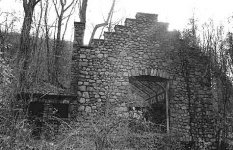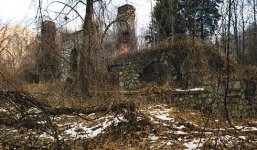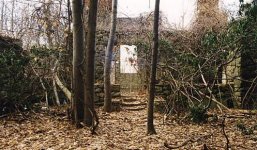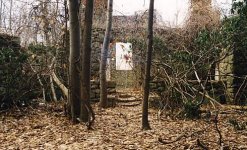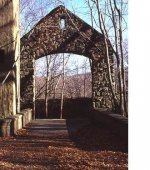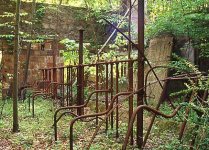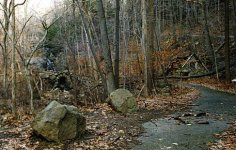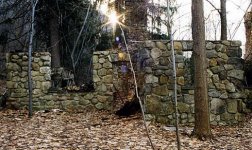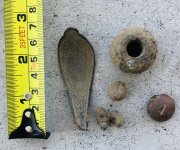Gypsy Heart
Gold Member
One of the great collections of ruins in the Hudson Valley lies on publicly-accessible land. Although the layout of property is well-known to hikers, the early history of the estate is nearly unknown to historians. In 1917, Edward Joel Cornish and his wife Selina Bliss Carter Cornish acquired 650 acres in Cold Spring from Sigmund Stern of Chicago. What is known is that the mansion, garage, swimming pool, gardens and other outbuildings stood at that time of purchase by Cornish, having been built by this Sigmund Stern. The original appearance of these structures is uncertain as local historians are not aware of any known images of the estate before it fell into ruin.
Edward Cornish (1861-1938) was President of the National Lead Company from 1916 to 1933 and lived in New York to be near the company offices. Cornish and his wife Selina, formerly of Omaha, NB, died within two weeks of each other in May of 1938, and the estate seems to have lain abandoned more or less since then. The Cornish heirs sold the estate in 1963 to Central Hudson Gas and Electric, which briefly contemplated building a power plant on Breakneck Ridge, a fact largely forgotten by historians as this effort was overshadowed by Con Ed's prolonged and publicly-waged effort to build a similar plant across the Hudson River at Storm King. By the end of the 1960s however, the ruins of Cornish estate became part of the newly formed Hudson Highlands State Park.
All that remains of the structures on the estate are their stone walls. The building interiors are completely gutted and windows have been destroyed. According to a local newspaper article, Cold Spring Fire Department records show that there was a fire in the fall of 1956, which damaged part or all of the mansion. One can only guess at what these buildings originally looked like. Architecturally, it is possible that the mansion at least was either Shingle-style or Tudor-style. The fieldstone exterior lends itself well to either.
Besides the mansion, other surviving structures include the swimming pool, the greenhouse, and the pump house below to two picturesque waterfalls. At the north end of the 650-acre estate stands a large stone cattle barn. Another large building, possibly a garage, and another greenhouse stand in ruins there as well. Even an old wagon rusts away between the barn and the reservoir. Various articles on hiking websites about this property refer to the chimney in the barn and assume that the cows were "well kept." The chimney could likely served purposes other than keeping the cows warm, including providing heat to farmhands who may have lived in the upper level of the barn. Cornish raised prized Jersey cows here and. newspaper articles of the 1920s chronicled the record-setting milk producing efforts of Cornish's Jersey cows, including one named "Fon Owlet."
Further past the reservoir is Lake Surprise, site of an old but still active summer camp. Also, the Catskill Aqueduct slices through the Cornish property, separating the farm parcel from the residential section, and an early 20th-century pump-house can be seen along that trail. These photographs were taken largely between 1997 and 2002.
Edward Cornish (1861-1938) was President of the National Lead Company from 1916 to 1933 and lived in New York to be near the company offices. Cornish and his wife Selina, formerly of Omaha, NB, died within two weeks of each other in May of 1938, and the estate seems to have lain abandoned more or less since then. The Cornish heirs sold the estate in 1963 to Central Hudson Gas and Electric, which briefly contemplated building a power plant on Breakneck Ridge, a fact largely forgotten by historians as this effort was overshadowed by Con Ed's prolonged and publicly-waged effort to build a similar plant across the Hudson River at Storm King. By the end of the 1960s however, the ruins of Cornish estate became part of the newly formed Hudson Highlands State Park.
All that remains of the structures on the estate are their stone walls. The building interiors are completely gutted and windows have been destroyed. According to a local newspaper article, Cold Spring Fire Department records show that there was a fire in the fall of 1956, which damaged part or all of the mansion. One can only guess at what these buildings originally looked like. Architecturally, it is possible that the mansion at least was either Shingle-style or Tudor-style. The fieldstone exterior lends itself well to either.
Besides the mansion, other surviving structures include the swimming pool, the greenhouse, and the pump house below to two picturesque waterfalls. At the north end of the 650-acre estate stands a large stone cattle barn. Another large building, possibly a garage, and another greenhouse stand in ruins there as well. Even an old wagon rusts away between the barn and the reservoir. Various articles on hiking websites about this property refer to the chimney in the barn and assume that the cows were "well kept." The chimney could likely served purposes other than keeping the cows warm, including providing heat to farmhands who may have lived in the upper level of the barn. Cornish raised prized Jersey cows here and. newspaper articles of the 1920s chronicled the record-setting milk producing efforts of Cornish's Jersey cows, including one named "Fon Owlet."
Further past the reservoir is Lake Surprise, site of an old but still active summer camp. Also, the Catskill Aqueduct slices through the Cornish property, separating the farm parcel from the residential section, and an early 20th-century pump-house can be seen along that trail. These photographs were taken largely between 1997 and 2002.


